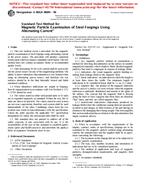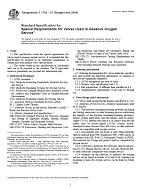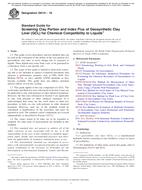1.1 This practice allows for the identification of 90 chemicals that may be found in water or in surface layers on water. This practice is based on the use of room-temperature fluorescence spectra taken from lists developed by the U.S. Environmental Protection Agency and the U.S. Coast Guard
1.2 Although many organic chemicals containing aromatic rings, heterocyclic rings, or extended conjugated double-bond systems have appreciable quantum yields of fluorescence, this practice is designed only for the specific compounds listed. If present in complex mixtures, preseparation by high-performance liquid chromatography (HPLC), column chromatography, or thin-layer chromatography (TLC) would probably be required.
1.3 If used with HPLC, this practice could be used for the identification of fluorescence spectra generated by optical multichannel analyzers (OMA) or diode-array detectors.
1.4 For simple mixtures, or in the presence of other nonfluorescing chemicals, separatory techniques might not be required. The excitation and emission maximum wavelengths listed in this practice could be used with standard fluorescence techniques
This standard does not purport to address the safety concerns, if any, associated with its use. It is the responsibility of the user of this standard to establish appropriate safety and health practices and determine the applicability of regulatory limitations prior to use.
Product Details
- Published:
- 07/01/2006
- Number of Pages:
- 6
- File Size:
- 1 file , 83 KB
- Redline File Size:
- 2 files , 160 KB


